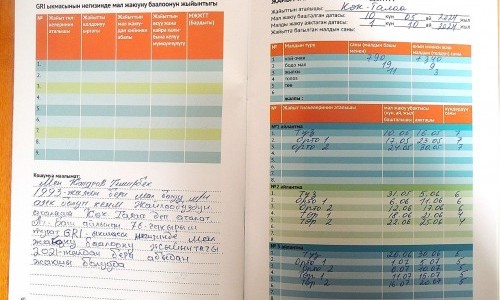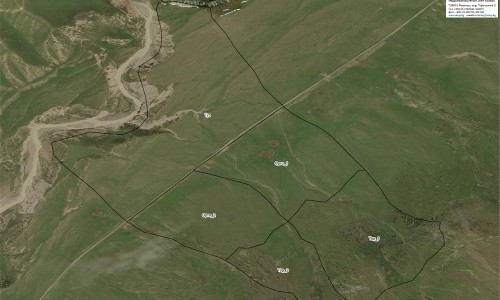
Temirbek Kaparov, an experienced shepherd from the village of At-Bashi in Naryn region, spends every summer, from May to late September, on the jailoo — high-altitude summer pastures. His grazing area, Kok-Taala, is located on the territory of the Naryn Forestry and is considered state land. This year, Temirbek grazed over 800 sheep, cows, and horses, though in previous years the number reached up to 1,000. Despite such a large number of animals, Temirbek has managed to maintain the productivity of the pasture, turning it into a model of sustainable grazing practices.
Four years ago, Temirbek joined a pasture improvement project implemented by the СAMР Alatoo РF. Together with other shepherds, he learned about the Grazing Response Index (GRI) methodology, which is based on rotational grazing principles. This approach is especially critical for regions facing high anthropogenic pressure on ecosystems. The training sessions and expert recommendations provided by the project made it possible for him to master this method.
Applying this knowledge in practice, Temirbek divided his pasture into five sections. At the start of the grazing season, he grazed his livestock on three sections located closer to water sources. This allowed the grass cover on the upper sections to regrow and accumulate nutrients. By mid-June, Temirbek moved the animals to the upper sections, giving the lower areas time to recover and grow. Over the season, the livestock rotated across all five sections, ensuring even grass cover and sustainability.
Temirbek meticulously recorded changes in the grazing areas in a "Shepherd's Journal." His observations went beyond visual assessments; he used GRI indicators to measure grass height, document plant growth stages such as heading and flowering, and monitor grass density. On one section, project specialists set up a 2x2 meter fenced monitoring area to study the impact of grazing. The experiment revealed that within the fenced area, where livestock did not graze, the grass grew up to half a meter, while outside the fence, the grass height was only 5–6 cm. However, the absence of grazing had its drawbacks: the quality of the grass declined due to the accumulation of old, dry vegetation and the spread of weeds. Temirbek believes that grazing should be moderate in terms of livestock numbers and carefully timed. Unregulated grazing, he warns, can severely harm biodiversity.
Since adopting the GRI methodology, Temirbek has achieved remarkable results: even grass growth across all sections, faster vegetation recovery, and improved forage quality. This, in turn, has positively impacted livestock weight gain. Although Temirbek initially doubted the new approach, the first results changed his perspective. Today, he is convinced of the method's effectiveness and intends to continue using it, even without project support.
To encourage other shepherds participating in the project, they are provided with practical items such as saddles, binoculars, flashlights, and other essentials for pasture life. These incentives not only motivate participants to continue their work but also attract new shepherds to adopt the methodology. However, despite Temirbek's success, many shepherds remain reluctant to embrace this approach. Key challenges include disputes over pasture land, unregulated grazing, and transit livestock that damages pastures as it moves to high-altitude areas. Additionally, restrictions on the use of state-owned pastures imposed by forestry enterprises further complicate matters.
Temirbek Kaparov’s experience demonstrates that a sustainable approach to grazing is essential for preserving nature and enhancing livestock productivity.





Итоги пастбищного сезона 2018 года были подведены на очередном заседании районной пастбищной комиссии (РПК).
MoreThe development of the unified method, "Monitoring Pastures at the Local Level," is nearing completion.
MoreЧетыре новых моста построены в 2018 году в Кыргызстане при поддержке ОФ “CAMP Алатоо” и Швейцарской ассоциации “Памирские...
More